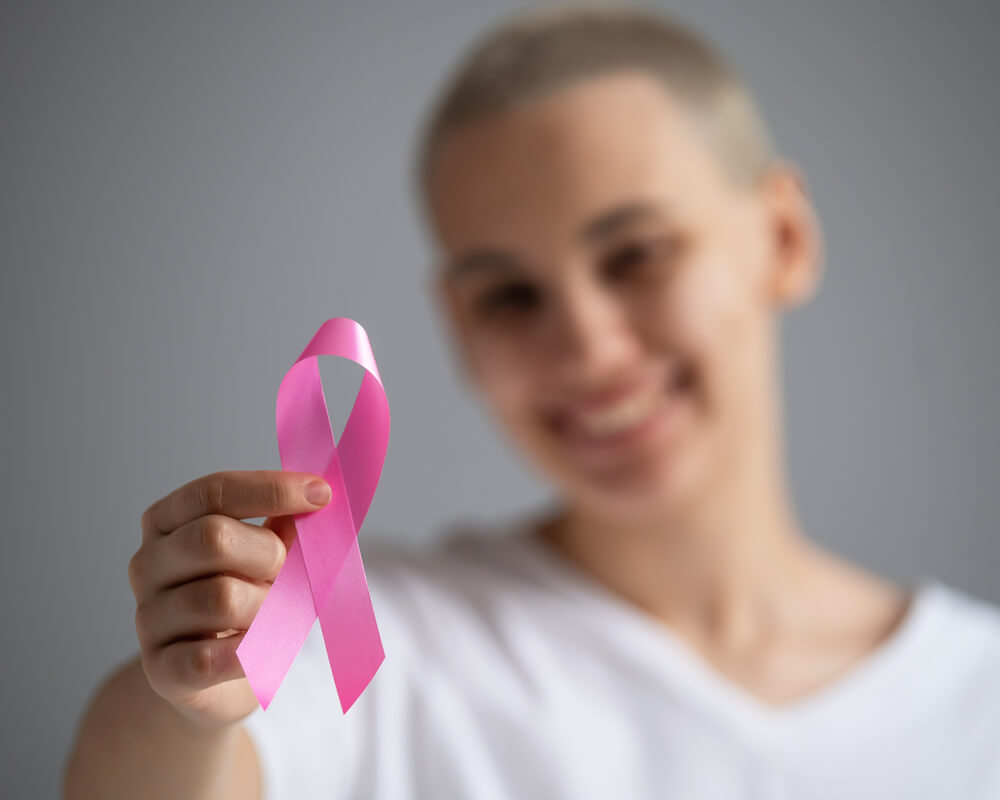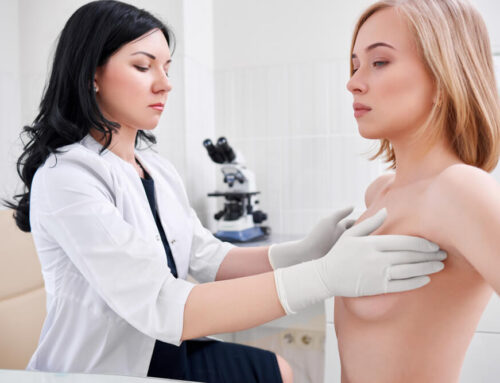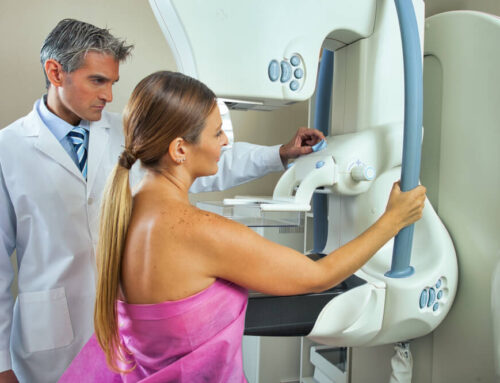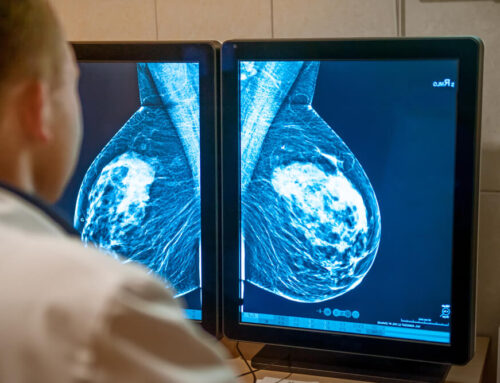The cancer characteristics, such as its size and the matter of hormonal receptors, also determine the stages of breast cancer. Knowing the precise breast cancer stages allows both you and your doctor to estimate the treatment outcome, choose the ideal treatment option, as well as decide whether some clinical trials may work for you.
Stages of breast cancer are described by numbers from zero to four. Stage 0 breast cancer refers to non-invasive cancer that hasn’t spread from its original location, while stage 4 breast cancer refers to an invasive tumor that has already spread to other body parts.
How to Determine Breast Cancer Stages
In order to pinpoint the stage of breast cancer, your doctor will refer to the pathology report, which will include data on whether cancer has spread around the breast area, to other body parts, or is stagnating inside one breast locality. To find out the exact situation, the breast cancer specialist will have to check your breasts and lymph nodes during the removal surgery. It might also be necessary to do some other imaging and blood tests if the doctor suspects that the cancer has already spread beyond the breast area.
What’s the TNM Staging System
Up until 2018, the stage of the cancer was determined with just T, N, and M characteristics. In order to establish the stages of breast cancer, doctors use the so-called TNM staging system. That way, all doctors everywhere can diagnose, propose treatment, and keep track of cancer patients more uniformly.
In that calculation, T refers to the size of primary cancer, where TX stands for cancer that’s not assessable, T0 for no primary cancer evidence, and Tis for in situ cancer, i.e., no growth beyond the primary location. When cancer has spread to the breast tissue, we use T1, T2, T3, and T4 to describe it; the higher the number is, the larger the cancer growth.
N refers to the involvement of lymph nodes or whether cancer has already spread to the lymph nodes. Here, NX means that the cancer is not assessable, N0 explains that the lymph nodes are not affected by cancer, and the numbers N1, N2, and N3 describe the size of cancer that has already spread into the lymph nodes.
M refers to the metastasis in case cancer has already spread into other body parts. Again, MX stands for cancer that’s not assessable, M0 for no clear metastasis, and M1 for existing metastasis.
In 2018, the TNM staging system was updated and some other characteristics were added in order to improve the diagnosis of breast cancer stages further. These characteristics are as follows:
- Tumor grade which assesses just how similar cancer and normal cells are in appearance
- Estrogen and progesterone receptor status refers to whether or not the cancer cells have receptors for these hormones
- HER2 status analyzes whether the cancer cells are producing HER2 protein
- Oncotype DX score, which refers to cancer that is positive for estrogen and progesterone, but it’s HER2 negative and doesn’t affect the lymph nodes
These additional characteristics in the TNM staging system have indeed turned the entire process of determining breast cancer stages more complex, but it’s also a fact that they have made the final diagnosis considerably more accurate.
The stages of the breast cancer can also be described in the following manner:
- Local, when the cancer is still located in the breast
- Regional, when cancer has affected the lymph nodes
- Distant, when cancer has traveled to other body parts
Stage 0 Breast Cancer
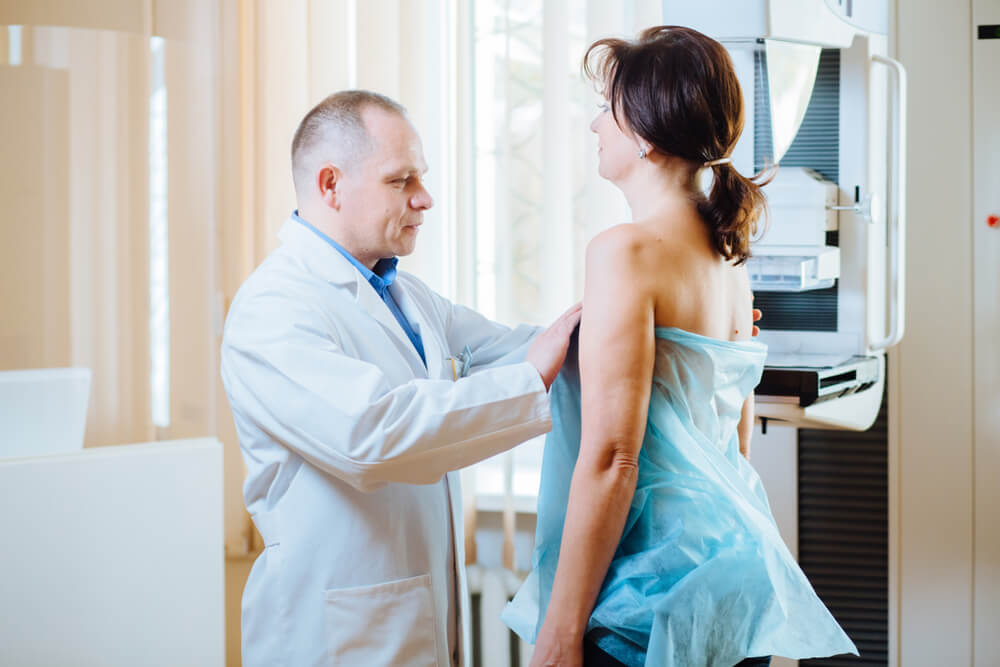
Stage 0 breast cancer is a non-invasive type of cancer where the abnormal cells are stagnant. This means that the cells haven’t moved from the primary location they originated from in the breast.
Stage 1 Breast Cancer
Stage 1 breast cancer is an invasive type of cancer that is showing evidence of affecting surrounding breast tissue. It can be further categorized into 1A and 1B stages.
1A stage of breast cancer refers to a tumor that’s about 2 cm in size but hasn’t spread to the lymph nodes. If the cancer is found to be positive for estrogen or progesterone receptors, it’s typically described as stage 1A.
1B stage of breast cancer refers to two situations; there’s either no tumor in the breast but small cancer cell groups (not bigger than 2 mm) are present in the lymph nodes – or there is a tumor in the breast, but it’s smaller than 2 cm, together with present cancer cell groups smaller than 2 mm in the lymph nodes.
The so-called microscopic invasion can occur in stage 1 breast cancer. This means that the cancer cells have just started to move and invade the tissue outside their primary location, but they are still smaller than 1 mm.
Stage 2 Breast Cancer
Just like stage 1, stage 2 breast cancer is also categorized into 2A and 2B stages.
2A stage refers to the breast cancer that’s invasive and isn’t present in the breast, but cancer cells that are larger than 2 mm are found in the lymph nodes, either close to the breast bone or under the arm.
Cancer is also considered stage 2A when the cancer cells are:
- 2 cm or smaller and affect the lymph nodes
- Smaller than 5 cm but larger than 2 cm without affecting the lymph nodes
Keep in mind that it’s highly possible for a tumor to be categorized into stage 1 breast cancer if it’s between 2 and 5 cm in size, still located in the breast, and HER2 negative. Furthermore, if it’s negative for progesterone, positive for estrogen, and has a 9 Oncotype DX score, the tumor will probably be described as 1A stage.
2B stage refers to the breast cancer that’s invasive, with its size larger than 2 cm but smaller than 5 cm. This stage also includes smaller cancer cell groups that are still smaller than 2 mm but larger than 0.2 mm that have been found in the lymph nodes.
Another 2B case involves a tumor between 2 and 5 cm in size that has affected the nearby lymph nodes or one that’s larger than 5 cm but hasn’t still spread to the lymph nodes.
Again, even if the tumor is between 2 and 5 cm, present in the lymph nodes, positive for both progesterone and estrogen receptors, and HER2 positive, chances are it will be deemed as stage 1.
Stage 3 Breast Cancer
Stage 3 breast cancer can be further categorized into 3A, 3B, and 3C.
In the case of the 3A stage, the tumor is:
- Of any size or not present in the breast at all; present in four to nine lymph nodes
- Larger than 5 cm; small cancer cell groups (smaller than 2 mm) are present in lymph nodes
- Larger than 5 cm; already has spread to one to three lymph nodes
Even if the tumor is larger than 5 cm, but its grade is 2, present in between four and nine lymph nodes, positive for estrogen and progesterone, and HER2 positive, it will probably be categorized as 1B stage.
In the case of the 3B stage, the tumor is:
- Of any size and has already affected breast skin or chest wall, creating ulcers and/or swelling
- Potentially present in up to nine lymph nodes or affected the lymph nodes close to the breast bone
Even if the tumor is larger than 5 cm, but its grade is 3, present in between four to nine lymph nodes, positive for both estrogen and progesterone, as well as HER2 positive, it will probably be categorized as 2A stage.
When the 3B cancer stage is concerned, we’re talking about inflammatory breast cancer. The common accompanying symptoms include red, swollen, and/or warm breast skin, with cancer cells that have already affected lymph nodes and are evident in the skin.
In the case of the 3C stage, the tumor is:
- Of any size, maybe not even present in the breast; may have affected the breast skin or chest wall
- Found in ten or more lymph nodes; the affected lymph nodes are close to the breast bone or around the collarbone
Even if the tumor is of any size, but its grade is 2, positive for both estrogen and progesterone, and either HER2 positive or negative, it will probably be categorized as 3A stage.
Stage 4 Breast Cancer
Stage 4 breast cancer refers to the invasive type of cancer that has already spread from the breast and lymph nodes into other body parts. These could be other distant lymph nodes as well as bones, brain, lungs, liver, or skin.
Stage 4 is a very advanced category of cancer and is often described as metastasis. It’s possible for doctors to determine stage 4 cancer upon their first diagnosis, but it’s more common for this type of cancer to be a result of a previous breast cancer recurrence.
Breast Cancer Treatment by Stage
When we talk about breast cancer treatment by stage, available options will vary. It’s also important to mention that not all patients in the same stage will require or respond well to the same kind of treatment. That said, the following is a general application of available breast cancer treatment by stage.
Stage 0
Typically, no chemotherapy is necessary. Targeted therapy and immunotherapy are also not applicable. The most common treatment options in this case include:
- Complete mastectomy, which rarely requires radiation afterward
- Lumpectomy, either with or without radiation afterward
- Hormonal therapy might be necessary as well
Stage 1
When it comes to stage 1 breast cancer, chemotherapy, as well as immunotherapy and targeted therapy with meds might be necessary. Hormonal therapy is also often recommended. The most common treatments include:
- Complete mastectomy, with rare cases of radiation afterward
- Lumpectomy is often followed by radiation, but sometimes, the radiation isn’t needed
- Sentinel lymph node biopsy
- Auxiliary lymph node biopsy
Stage 2
When cancer is classified as stage 2, chemotherapy is recommended rather frequently. Hormonal therapy, together with targeted therapy and immunotherapy, is also often necessary. The most common treatments include:
- Complete mastectomy, often followed by radiation afterward
- Lumpectomy, often followed by radiation and sometimes chemotherapy
- Sentinel lymph node biopsy
- Auxiliary lymph node biopsy
- Potential supraclavicular and/or internal mammary lymph nodes radiation
Stage 3
Those affected by stage 3 breast cancer will almost always have to go through chemotherapy. Again, immunotherapy, targeted therapy, and hormonal therapy might also be used to manage the condition. The most common treatments include:
- Complete mastectomy, followed by radiation
- Chemotherapy, followed by complete mastectomy and radiation
- Removal of axillary lymph nodes
- Potential supraclavicular and/or internal mammary lymph nodes radiation
Stage 4
Stage 4 breast cancer which signals that cancer has spread to other parts of the body always requires chemotherapy as well as radiation to the affected areas. The most common treatments include surgery and radiation, with all of the previously mentioned treatments adjusted to the patient. Hormonal therapy is almost always used, while immunotherapy and targeted therapy with meds are also rather frequent.
How Fast Does Breast Cancer Grow?

It’s not all that straightforward and simple to state just how fast breast cancer grows, as this depends on many different factors. But some general estimates can be made.
Namely, once certain genetic mutations of normal breast cells occur, these changes are viewed as cancerous. And these changes or mutations occur in the genes of the cells, which are responsible for cell growth. Changes such as these can happen over a very long period of time, sometimes even decades, before the mutated cell can be called a cancer cell.
Once a cell becomes a cancer cell, it starts to quickly divide and multiply, which is precisely why the larger the tumor gets, the faster it spreads and grows.
However, not all cells go through this process equally at the same time. How fast breast cancer grows will differ from stage to stage. What’s more, breast cancer is actually considered a “low growth” when compared to some other tumors that affect other parts of the body originally. For instance, leukemia and lymphoma are tumors that have much higher growth, with a considerably shorter activity period before detection.
Factors That Affect Growth Rate
As mentioned, the speed of cancer growth is determined by many different factors. For example, some of these factors are as follows:
- The type of cancer; cancer that’s considered inflammatory often grows a lot faster compared to other breast cancer types
- Age when the cancer was diagnosed; younger women often experience faster cancer growth compared to older women, commonly with a higher cancer grade as well
- Menopausal age; faster cancer growth was noticed in women who still haven’t hit menopause compared to menopausal women, probably because of the estrogen levels
- The status of the receptors; triple-negative and triple positive cancers tend to grow faster compared to tumors that are positive to estrogen-only
- Estrogen treatment; some women have to use estrogen therapy, especially after menopause, which also makes the breast cancer grow faster
- Ki-67 index for specific tumor marker measurement; the higher this index is the faster the doubling time of the cancer gets
- Tumor grade that describes the cell appearance; the higher this grade is, the faster the doubling time of the cancer gets as well
In cases where cancer spreads from the breast or lymph nodes to other body parts such as the liver, lungs, bones, etc., it cannot be cured anymore and is referred to as metastasis. In general, breast cancer has every potential to spread beyond its original location unless it’s a stage 0 breast cancer. This means it’s not invasive and can be completely cured with surgery.
Stages of breast cancer from 1 to 4 are all invasive and can spread to other body parts. This is why it’s so important to check for the presence of cancer cells in lymph nodes as this indicates cancer’s tendency to spread even in its earliest stages.
Regular visits to the doctor for complete wellness checkups are of vital importance for all women. Identifying the potential presence of cancer can literally save lives. Women are also encouraged to perform regular breast checkups on their own as well. If you have any questions or concerns or wish to find a trusting doctor to take care of your health long-term, don’t hesitate to reach out to us at Breast Care Center where we provide the best breast evaluation and treatment in Miami, FL. We always offer tailored and personalized treatment and approach for all of our patients.



